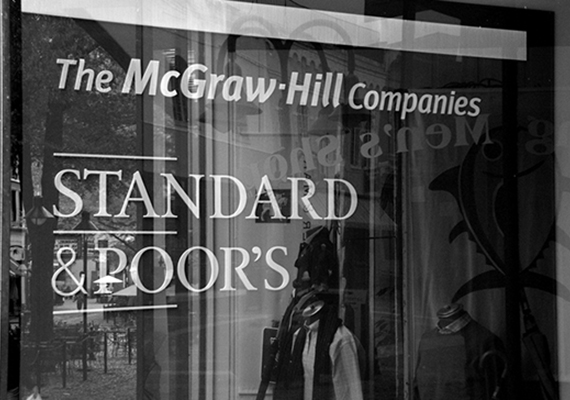
Moody’s, Standard & Poor’s…. We hear news about their ratings every few newscasts, but the average citizen understands little about their identity. Their opaque way of functioning has raised criticism and suspicions, yet few institutions or companies discontinue their services. Why?
29 january 2016
What they do
In simplified terms, these agencies analyse the certainty that a debt issuer, for this example a large business or the state, can face all payment commitments to his investors, whether it’s the prefixed interests or the initial funds. This is what we would call default risk.
How do they evaluate this risk? Essentially, by incorporating to their analyses any factor that might interfere in the credit strength of the indebted entity. A readjustment in the predicted income of the business? Management changeovers? A shift of government, and a posteriori, of a country’s economic and fiscal policy? Everything can, hypothetically, make a difference (let’s remember that, as the same agencies openly admit, these are opinions).
Following the educational tradition of English-speaking countries, ratings are assigned by letters (rather than numbers), from best to worst alphabetically. As such, an “AAA” rating shows high quality credit capacity, a “Ba” or “BB” rating alerts to a more or less speculative investment with some risks in the mid and long-term, and a “C” or “D” rating indicate a current or impending case of bankruptcy. On top of that, each agency reserves itself the possibility to apply “+” or “-“ symbols as a form of subcategorisation. Ratings are usually accompanied by a rating outlook by the agency (in which direction could the rating move in the short term): stable (the most common), positive or negative.
Which are the most relevant
The rating agencies market has been concentrated on three large, historical organisations. Standard & Poor’s – a result of the fusion between Poor’s Publishing and Standard Statistics in 1941 (although its roots can be traced back to 1860) – and Moody’s, with over a hundred years in the business, cover nearly 80% of the market share, while Fitch Ratings, also centenary, generates around 15% of the sector’s movements.
The “Big Three”, as they are known in the English-speaking world, have benefitted many years from special distinctions granted to them by the regulatory bodies, such as the States’ NRSRP (Nationally recognised statistical rating organisation). In fact halfway through the nineties, after several takeovers and merges, they became the sole three with this recognition, required by many private institutions for them to operate.
Following the financial crisis and motivated by a certain mistrust generated towards the three companies, a number of alternative agencies have started to push forward, although their niche is still national or regional: Axesor, first Spanish agency; UCRG, financed by the Russian and Chinese Governments; or French-born Scope, which plans on becoming a European competitor to the “Big Three”, after the European Commission’s plan to create an independent agency faded away.
Why they are important
Although none of these ratings are binding (in other words, they are the result of variable and debatable observations), they do theoretically have a direct impact on a businesses’ debt price. The higher the risk, the more attractive returns will need to be (interests and benefits agreed to) in order to attract investors. And vice-versa: if a business improves its ratings, that allows it to emit bonds at a lower interest rate, given that the chances of default are reduced (and trust in the investments rises).
For investors, rating changes can lead to a domino effect in the value of their fixed rate bonds, in particular if he or she wishes to sell the security to a second investor before maturity: a newer debt emission with a higher interest rate will be more valuable than an older bond, and vice-versa.
However, critical voices of the “Big Three” doubt the efficiency and impartiality of their ratings, since these are notified publicly and of course given to the same companies that hire them (possible conflict of interest). A year ago Standard & Poor’s agreed to pay 1.380 million dollars to the United States’ Department of Justice for manipulating the grades of financial assets backed by sub-prime mortgages. Lehman Brothers’s case was also famous: the day before their collapse, S&P, Mood’ys and Fitch granted the company A, A2 and A+ ratings, respectively (other agencies such as Egan-Jones had warned of the existing default risk months before).
In any case, an opaque way of doing their business hasn’t excessively hurt, yet, that 95% market share, nor their relevance in the financial world. Cases like Madrid’s are atypical. Many of the assets that they evaluate may be close to default, but the health of these rating agencies is still, without discussion, AAA.
Further information:
Fitch – Understanding Credit Ratings











